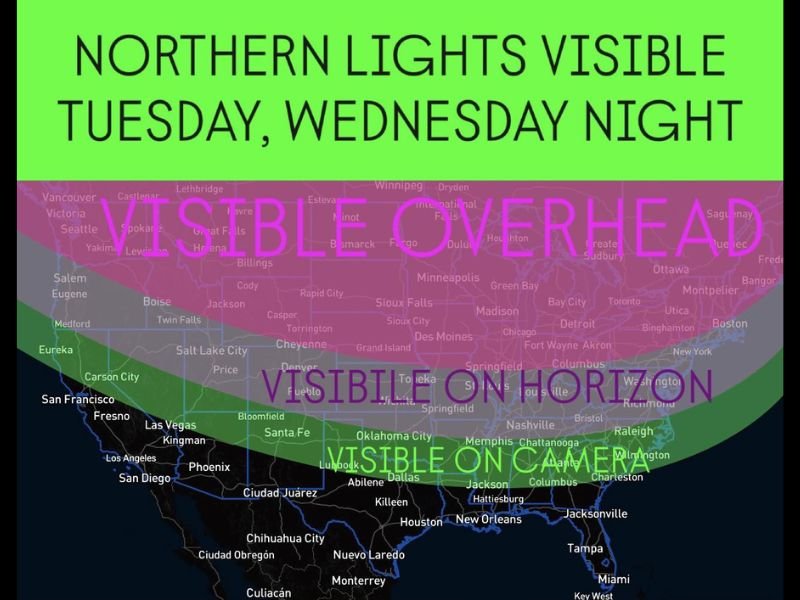Northern Lights Expected to Shine Across Much of the U.S. Tuesday and Wednesday Night as Severe Geomagnetic Storm Hits
ILLINOIS — A severe geomagnetic storm watch has been issued, and experts say the northern lights could be visible across much of the United States on Tuesday and Wednesday night, reaching farther south than usual — possibly visible on the horizon even from Illinois and neighboring states.
According to meteorologists, the event is linked to a massive solar flare that released high-energy particles toward Earth, triggering a G4-level geomagnetic storm capable of producing colorful auroras well beyond their typical northern range.
Northern Lights Could Reach Illinois and Other Southern States
The latest forecast map shows that states such as Minnesota, Wisconsin, and Michigan may see the lights directly overhead, while residents in Illinois, Indiana, and Ohio could see them near the northern horizon.
Even areas farther south — including Oklahoma, Arkansas, and parts of Tennessee — may be able to capture faint glows or colors using night-mode photography on smartphones.
“This will be one of the most significant opportunities to see the aurora borealis across the continental U.S. in recent years,” said a space weather forecaster from NOAA’s Space Weather Prediction Center. “If skies remain clear, millions of Americans will have a chance to witness this rare spectacle.”
Best Viewing Conditions and Tips
Experts recommend heading away from city lights and urban areas to reduce light pollution. The best viewing times will be between 10 p.m. and 2 a.m. local time, with clear skies offering the highest visibility.
To maximize the experience:
- Look toward the northern horizon — the lights will appear lower in the sky in southern states.
- Use night mode or long-exposure settings on your phone for photos.
- Find dark, open areas such as parks or rural fields for optimal viewing.
- Check cloud forecasts before heading out, as overcast skies will block visibility.
What Causes the Phenomenon
The aurora borealis, commonly known as the northern lights, occurs when charged solar particles collide with gases in Earth’s atmosphere, creating dazzling waves of color. The stronger the geomagnetic storm, the farther south the lights can be seen.
NASA reported that this week’s solar flare is part of an active sunspot cycle, releasing plasma bursts that can temporarily disrupt communications but also produce brilliant light shows across high and mid-latitudes.
Safety Reminder and Viewing Precautions
While the lights pose no danger to people on the ground, experts caution that the storm could cause minor GPS or radio interference in some regions. The general public is advised to enjoy the display safely from open outdoor areas.
If the forecast holds, Illinois residents may have a rare opportunity to photograph the aurora without traveling north — a spectacle not often seen this far south.
Stay tuned to NapervilleLocal.com for updates on sky conditions and weather alerts across Illinois.

I’ve lived in Naperville long enough to see how quickly our community changes — from new developments downtown to sudden shifts in our Midwest weather. Reporting on Naperville news and daily forecasts gives me the chance to keep neighbors informed about what really matters. My goal is simple: deliver clear, timely updates so you always know what’s happening in our city and what to expect from the skies above.

